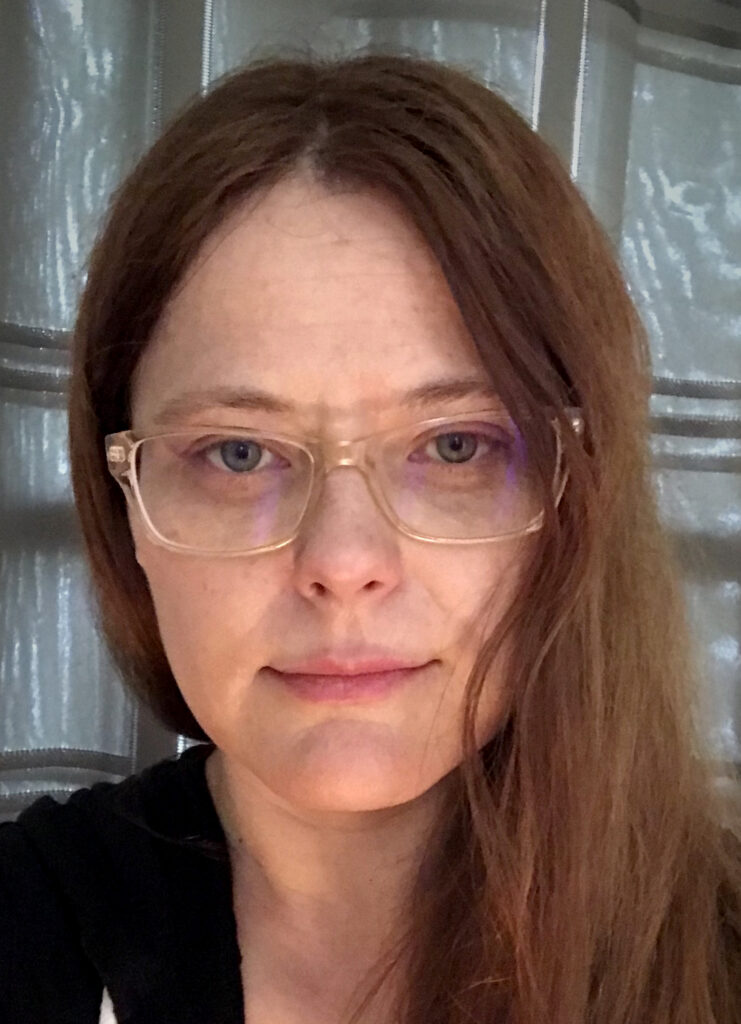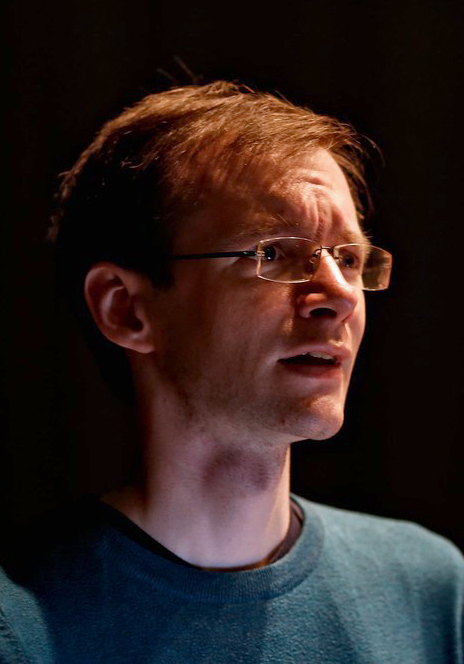GNOME is more than just code. Within our contributors and users, we’ve seen how our technology and community can help people grow, help people learn, and change lives. Here are some of these stories.
Meg Ford | Matthew Garret | Sam Hartman | Federico Mena-Quintero | Karen Sandler

Meg Ford
Outreachy Alumn
When people talk about software freedom, they often emphasize the difference between “Free as in Freedom” and “Free as in Beer”. When I joined GNOME in 2011 I was a single parent struggling to put food on the table for my two kids, and both of those elements were necessary for my involvement.
I was recruited by a friend to participate in Outreachy shortly before I started a Master’s program in Computer Science. The mentorship I received from my fellow GNOMEies and the open nature of the code provided me with great learning opportunities. I was able to attend school without paying hundreds of dollars for software licenses. Being able to see and hack on the entire system was an awe-inspiring and sometimes monumentally frustrating experience.
I have stayed involved with GNOME because my experiences within the community are, to a large extent, what shaped my career as a software engineer. Free Software, to me, is about creating equal access to knowledge. It is about giving everyone the ability to make and share freely. I am happy that I have the ability to help create those opportunities for others.

Matthew Garrett
Programmer, Free Software Activist, and Open Source Project Contributor
My first software development job was working on Dasher, an information-efficient input method. We were funded to develop it into an accessibility tool, and I’d been hired to do both the development and to grow a wider community around the project. GNOME 2 was still the new hotness, and most exciting was the work Sun and others were contributing to accessibility support for the platform. So, to raise awareness of Dasher and accessibility, I submitted a talk to GUADEC in Dublin and was somewhat surprised when I (a complete outsider to the community at this stage) was accepted.
The first morning of the conference I was scheduled against this guy called Havoc who was talking about something new called “D-Bus” or something, and it turned out most people were interested in hearing about that. But word about Dasher spread as the conference went on, and the days turned into me demoing it over and over again. People weren’t just impressed by the technology – they understood that this could be transformative for people who weren’t being well served by computers as they stood. Luis Villa would later go on to say “GNOME is people”, but in the first few days I spent in the GNOME community I learned something possibly even more important – GNOME cares about people.
I’ve tried to keep that core to my development philosophy. Software doesn’t exist in a vacuum. Software exists to be used by real human beings. Building the best software possible means understanding how those people use software and how we can do our best to support that. It means building communities where we have the representation we need to make it possible to gain that understanding. GNOME taught me that human interactions are key to achieving the best possible outcome.
Thanks, GNOME. Many of the people I met in Dublin in 2003 have remained friends for life, and the lessons I learned there have made me a better person.

Sam Hartman
Blind GNOME user, Former Debian Project Leader
GNOME is about independence and control of my own digital destiny.
I’ve been using GNOME since 2009 because it provides an accessible way for me to use modern applications while still respecting my freedom and humanity.
Before GNOME’s accessibility matured, there was a constant struggle between accessibility and user freedom. For example, when I was appointed to the Internet Engineering Steering Group (the approval body for the RFC series of Internet standards), one of the big questions was whether I would be able to use various web tools effectively enough to do my job. I had built a career as a security engineer working in the open source and free software world. But every year as the world became more graphical, there was less I could do using free software tools. Yet I succeeded because I had user freedom: I could understand my computing environment because it was open. I could experiment with it and change it. That freedom gave me the experience and confidence to become a leading expert on computer security.
Every year, I felt increasing pressure to give up that flexibility and move to a proprietary platform where accessibility software would cost as much as a high-end desktop computer. But at least I’d be able to shop, pay taxes, read books, and perform other basic tasks.
Before I had to make that choice, GNOME’s accessibility support matured. Now I get freedom and independence in one desktop.

Federico Mena-Quintero
Co-founder of the GNOME project
I feel like I won the free software lottery, for GNOME has been my entire career. I never had to job-hunt: my first employer created a job for me and other GNOMErs during the early development of the project. It pains me to see that free software does not automatically grant everyone the same privilege and opportunity.
As a young programmer, I thought I could create entire worlds from nothing. Working on GNOME taught me otherwise; sometimes I would be able to take an existing foundation and build upon it, and sometimes people would pick up what I had left unfinished and would turn it into amazing software. GNOME made me learn that we can collectively make good software that has an impact on people and that doing so is a learning process within ourselves.
During my first years in free software, I was too narrowly focused on writing free replacements for every proprietary thing. Thanks to the people in GNOME I learned about bigger issues: how we cannot make good software without having a diverse set of contributors; how it is a moral requirement to be an ally to marginalized people; how usability and accessibility are a human way to re-frame the right to use software however we wish; how free software development is real work and needs compensation.
People in GNOME genuinely care about each other; we are not just a bunch of people who work on computers and meet somewhat regularly, and I am thankful for all the friendships that have come about through GNOME. We have seen each other change and grow over the years and take comfort in having each other.
When I meet someone from outside of tech who, for reasons unknown, uses a GNOME desktop, I tell myself: my friends and I did that.

Karen Sandler
Executive director of the Software Freedom Conservancy, former executive director of the GNOME Foundation, an attorney, and former general counsel of the Software Freedom Law Center
It’s impossible to describe all of the ways that GNOME has personally impacted me in just a few sentences. The lifelong friendships, support, focus, and education that inform my software freedom advocacy and diversity work, not to mention the daily productivity I have been able to achieve as just a GNOME user, will stay with me forever.
It was my involvement with GNOME that connected me with Marina Zhurakhinskaya who revitalized the Outreach Program for Women program, an internship program initially conceived to improve diversity in GNOME. With help from many others, we grew the initiative and ultimately expanded it across many free and open source software communities. The GNOME community’s commitment to fairness and a desire to include everyone in the creation of GNOME led to it becoming the birthplace of the program. Software Freedom Conservancy is proud to steward the program, now called Outreachy, and almost 600 people have completed internships.
The GNOME community gives me so much joy. When I think about my time as a GNOME contributor, Executive Director of the Foundation, working together on Outreachy, and simply as a long-time fan of the software, I am struck by the passion and kindness, and friendship I encountered. I cannot imagine my own advocacy without GNOME and its influence on my career.
Help us build the future of GNOME
The experiences and stories of our GNOME community are made possible by donations from people like you. One-time donations and our monthly Friends of GNOME donors are one of the best ways you can support GNOME and our community.
Photo Credits
Meg Ford: License CC-BY-SA Meg Ford
Matthew Garrett: “Porto Alegre, 11/07/2015 – Fisl16 – How much of your computer is non-free, and how worried should you be? com Matthew Garrett – Foto: Camila Domingues” by fisldezesseis is licensed under CC BY-SA 2.0
Federico Mena-Quintero: License CC-BY-SA Federico Mena-Quintero
Karen Sandler: “File:Porto Alegre, 08-07-15 – Stand Up for the GPL! com Karen Sandler – Foto Tárlis Schneider (19347725750).jpg” by Fórum Internacional Software Livre is licensed under CC BY-SA 2.0
